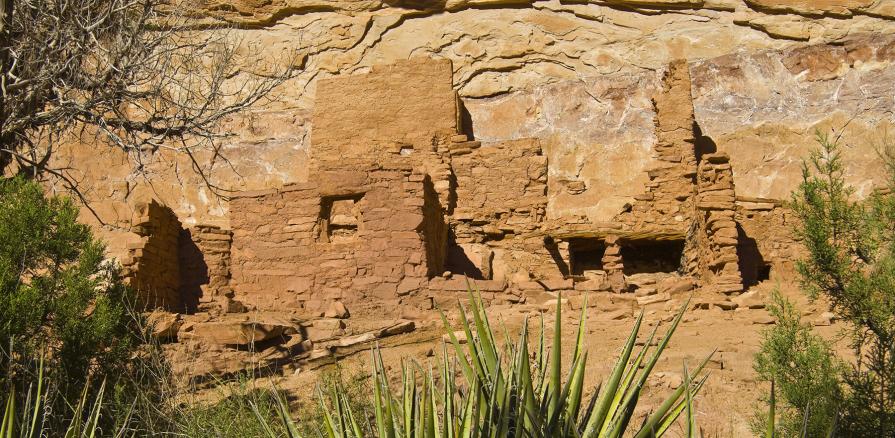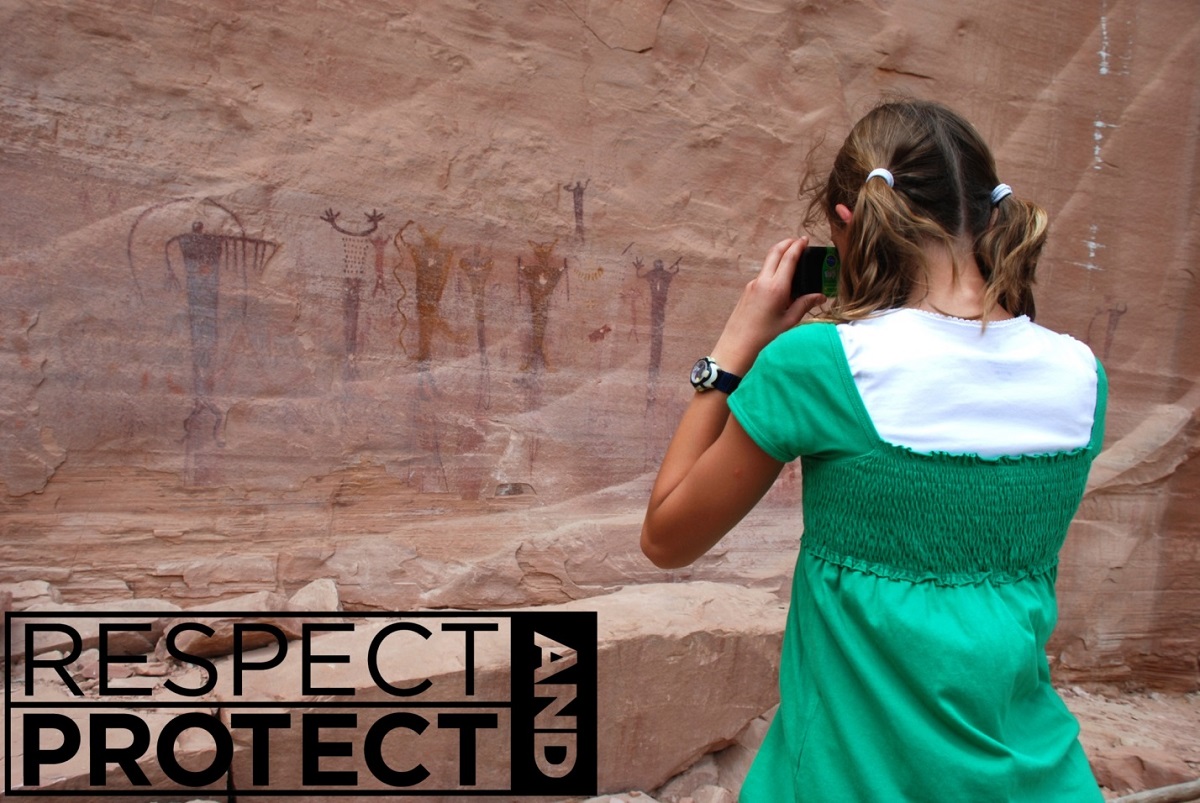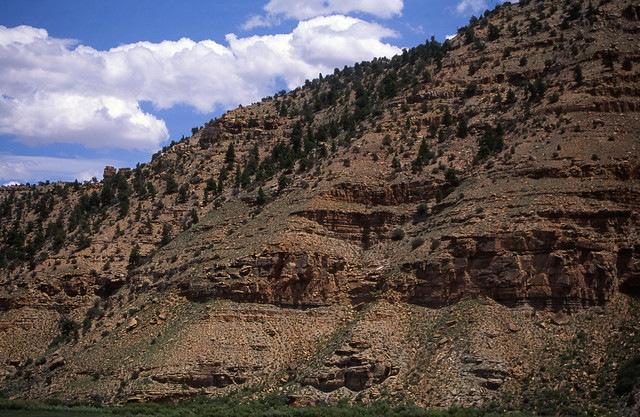
Utah Archaeology
BLM-Utah has the important responsibility of managing archaeological, historical, and traditional-use sites, commonly referred to as ‘cultural’ or ‘heritage’ resources on public lands in Utah. Heritage resources are fragile, irreplaceable resources that are part of our Nation's heritage and Utah has a unique and rich array of these resources representing 13,000 years of human history. The variety of heritage resources on public lands in Utah ranges from; Barrier Canyon Style pictographs to pioneer inscriptions, Ancestral Puebloan cliff dwellings to historical cabins, and prehistoric artifact scatters to historic mining debris. BLM-Utah manages these heritage resources as an important part of our Nation's heritage.
As part of the responsibility to manage these resources, BLM-Utah identifies and evaluates the potential for each heritage resource to provide a scientific, traditional, experimental, or public use for the American public. BLM-Utah also has the responsibility to protect and preserve in place heritage resources on public lands for the benefit of present and future generations.
Respect and Protect
BLM manages an incredible variety of cultural and paleontological resources in Utah encompassing millions of years of natural history and thirteen thousand years of human history. In 2016, BLM launched a wide variety of programs, projects, and partnerships to protect cultural and paleontological resources and provide education, outreach, and stewardship opportunities for public land visitors in Utah.

BLM-Utah implemented 45 projects around the state with a focus on resources protection, education, and stewardship in areas with high visitation, high impacts, or public interest. Many projects were in support of heritage tourism development at increasingly popular cultural and paleontological sites throughout the state. Projects include the stabilization of at-risk cultural resources, such as prehistoric ruins in Cedar Mesa and portions of the historic Transcontinental Railroad grade; developing heritage tourism opportunities in Cedar Mesa, Nine Mile Canyon, and Moab; and numerous public outreach and education efforts in local Utah communities, such as developing a new exhibit about paleontological resources at the Grand Staircase-Escalante National Monument’s Big Water Visitor Center. The funding of so many forward looking projects and partnerships was a landmark moment for cultural resource management in Utah and will have a positive effect for years to come.
Statewide initiatives also include new partnerships in cultural and paleontological resources education, outreach, and stewardship. Following over a year of development and engagement with hundreds of stakeholders, BLM and Tread Lightly! launched their “Respect and Protect” outreach campaign to eliminate the looting of cultural and paleontological resources on public lands in Utah. BLM and Friends of Cedar Mesa partnered to build a statewide site steward program to train volunteers to monitor archaeological sites. BLM also partnered with Southern Utah University to increase the reach of Project Archaeology throughout the state and engage a wider range of teachers and students in this heritage education program.
Reporting a Discovery
If you find archaeological resources or human remains on public land
- Notify your local BLM Office as soon as possible about archaeological sites or artifacts found on public lands. If human remains are discovered, notify both the local BLM Office and Sheriff's department.
- Help protect the resources by leaving all items in place and not sharing the location with others.
- Remember, all human remains and cultural items should be treated with care and respect.
- Public Involvement - National Historic Preservation Act
-
Public Involvement under the National Historic Preservation Act for BLM Undertakings
The Utah Bureau of Land Management (BLM) uses BLM’s ePlanning website as one way for the public to become involved in National Historic Preservation Act (NHPA) Section 106 process for BLM undertakings in Utah. The ePlanning website contains summary information about the proposed project, as well as any associated documents that may have been uploaded. Information is searchable though both a map interface and a text search function. In additional information is wanted for any particular project, please contact the applicable field office.
For further information, please contact Lori Hunsaker, Deputy Preservation Officer at lhunsaker@blm.gov or 801-539-4276.
- Permits For Archaeological Investigations
-
Permit for Archaeological Investigations (PAI)
All persons conducting archaeological fieldwork on BLM administered lands in Utah area required to hold a valid Permit for Archaeological Investigation (PAI) prior to beginning fieldwork. For more information on the types of permits issued by BLM-Utah or for information on the qualifications necessary to obtain a permit, please refer to BLM Utah’s Permits for Archaeological Investigations Application Instructions (February 2025) available in PDF format under the Permit Forms and Guidelines accordion tab.
Permits issued by the BLM Utah State Office are only valid for cultural resource investigations on lands managed by BLM Utah. Fur cultural resource investigations on Tribal Lands, State Lands, or other Federal Lands, permits must be issued by the appropriate authority.
Application for a Permit
Any individual or company not currently permitted may apply for a Permit for Archaeological Investigations by submitting a DI-1926 form (Application for Permit for Archaeological Investigations) along with the required supporting documentation to the Utah State Office. Permit applications should not be sent directly to Field Offices.
Request for Modification of a Permit
A Request for Modification of a Permit for Archaeological Investigations form is used to add or remove personnel, extend dates for testing or excavation, change curatorial facilities, to change addresses or phone numbers, or to change the permitted areas of work. Permit modification requests must be sent to the Utah State Office and should not be submitted to Field Offices.
Submissions
All permit related requests should be directed to the permitting email address: blm_ut_cr_permits@blm.gov. No permit related correspondence should be directed to individuals.
Applications or modification quests shall include the application or modification form and required supporting documentation in WORD or PDF format. When submitting requests for renewals or modifications please be sure to include the permit number in the subject line of the request.
Requests will all be accepted though submission through United States Mail addressed to:
Nicole Lohman, Assistant State Archaeologist
Bureau of Land Management
Utah State Office
440 W 200 S Suite 500
Salt Lake City, UT 84101Digital copies of necessary forms are available in PDF format in the tab below.
Please allow 2 to 4 weeks for processing survey permit requests and 6 to 8 weeks for processing of limited testing or excavation permits.
Further Questions about Permits may be directed to:
blm_ut_cr_permits@blm.gov
(385) 478-0608 - Permit Forms and Guidelines
-
Applying for a Permit
The following materials include instructions on how to request a permit, BLM Utah requirements, and application forms.
Permit Instructions (revised February 2025)
Application Form DI-1926 Instructions
States and Counties for Relevant Experience
Modifications
Please use the following form for all permit modification requests.
Permit Modification Request Form
Annual Report
Refer to this document for annual reporting guidelines and examples.
Permit Requirements
These documents include policies that must be followed.
Summary Report of Cultural Resources Inspection
Utah Data Standards (revised March 2024)
Collections
Complete and submit this form for any collections made under a permit.
Deposition of Museum Collections Confirmation
Resources
Handbooks, Guidelines, and Policies Related to Fieldwork Conducted Under a Permit.
Field Work Authorization Request Form

